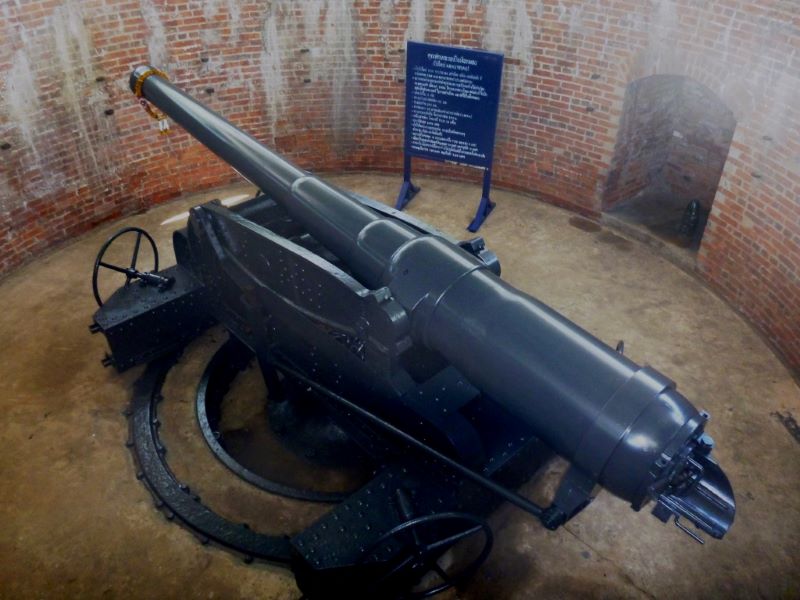Fort Chulachomklao and Fort Sua Samut, Bangkok, Thailand
Fort Chulachomklao stands at the mouth of the Chao Praya River and was built to defend the capital, Bangkok, which stands around 50km upstream. Seven Armstrong six inch guns were emplaced here and three more were similarly sited in an additional fort 7km up the river, Fort Sua Samut. Commenced in 1884, the works at Chulachomklao were completed in 1893 and armed with seven 6 inch Mark V Armstrong 30 calibre ‘disappearing’ RBL’s, built by the Elswick Ordinance Company in 1886.
Known locally as crouching tiger guns, they were formidable weapons, able to put a 100lb shell out to more than 7000m at nearly 1900 feet/s. The guns were professionally sited in individual brick-lined circular pits around 20m apart all enclosed within a larger walled and bastioned compound. A system of underground tunnels connected ammunition storage rooms, observation, barracks and command functions with the separate gun pits.
The contemporary design of the forts, the state-of-the-art armament, a restricted river channel and support by gunboats and mines should have represented a combination able to hold off all but the most powerful and determined attackers in 1893, but this was not to be the case.
In July of that year, a very-much-outgunned French squadron of a corvette and a gunboat were able to steam past within 1600m of the fort with little damage, after the forts gunners had departed due to shellfire from the ships. The French vessels steamed up to the capital, stood off the Royal palace and dictated an ignominious treaty on the Thai’s, who lost what is today Laos to French Indochina.
This was the only taste of action for the two forts and their ten guns. They were decommissioned in 1933, but luckily refurbished in 1991, and able to fire a collective royal salute in 1998! It appears quite likely they are the only operational guns of their type in the world today, certainly in battery strength.
Today the seven weapons at Fort Chulachomklao remain in excellent condition, some complete with operable breeches and Armstrong stamps still visible. They are located within a museum area which also includes a 1937 Japanese-built destroyer escort, the Mae Klong, armed with 4.7 inch guns, 18 inch torpedo tubes and depth charges – the only WW2 era Japanese-built warship still afloat (if I am not mistaken)– and an artillery display of around 50 weapons.

